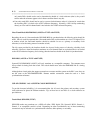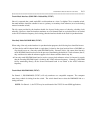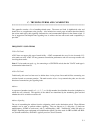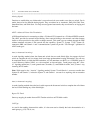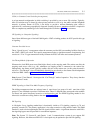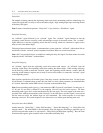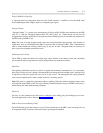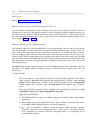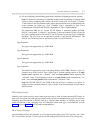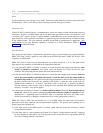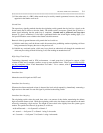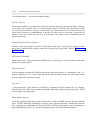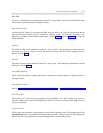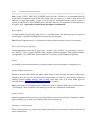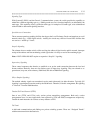C-6 TRUNKING TERMS AND CAPABILITIES
_ ___________________________________________________________________________________________________________________________
_ ___________________________________________________________________________________________________________________________
_ ___________________________________________________________________________________________________________________________
Direct Access
Refer to ‘‘Special Access Connections.’’
EPSCS (or Enhanced Private Switched Communications Service)
A private network configuration in which switching is provided by one or more CO switches. These CO
switches may be shared by other private networks as well as the public switched telephone network, just
like CCSA networks. However, EPSCS networks are more versatile than CCSA (1) since tandem calls do
not require attendant assistance, and (2) since an authorization code is frequently required in order to gain
access. Refer to CCSA and APLT.
E&M Lead Signaling (or Ear & Mouth Signaling)
The symmetric supervisory signaling method that, for analog applications, uses two leads (E-lead and M-
lead) for the transfer of 2-state signals that correspond to sending and receiving the ‘‘on-hook’’ and ‘‘off-
hook’’ signals. The 2-state signals consist of the presence or absence of a dc voltage or ground. The M-lead
transmits outgoing signals from the trunk circuit pack to the signaling unit/trunk. The E-lead receives
incoming signals from the trunk/signaling unit and passes these signals to the trunk circuit pack. The E&M
leads are crossed in the trunk connection so that the E-lead on one interface connects to the M-lead on the
other interface and vice-versa. For digital applications, signaling is by the state of two A bits, one for each
transmission direction.
The E&M method of trunk supervision may be used for establishing connections to other PBXs, COs, and
toll offices. Five slightly different variations or types of E&M supervision currently exist. They are
referred to as:
• Type I Interface
This is the original or first method developed for providing E&M supervision. The M-lead
signal consists of -48 volts (which represents the outgoing seizure ‘‘off-hook’’ state) and local
ground (which represents the ‘‘on-hook’’ state). The E-lead signal consists of local ground
(which represents the ‘‘off-hook’’ state) and open circuit (which represents the ‘‘on-hook’’
state).
There exists two other variations of Type I. Generally, the two variations are referred to as Type
I standard (or Type 1A) and Type I compatible (or Type 1B).
Application Considerations:
(1) The E&M interface (all types) was initially designed for within building (intra-building)
applications.
(2) Intra-building back-to-back applications of the ‘‘Type I standard’’ interface require the use
of an E&M-to-E&M signaling converter (as external equipment).
(3) The ‘‘Type I Compatible’’ interface contains an internal E&M signaling converter.
Therefore, if either one or both switches provide a ‘‘Type I circuit,’’ then direct (back-to-
back) connections are permitted. With this arrangement there is no requirement for an
external E&M converters.



